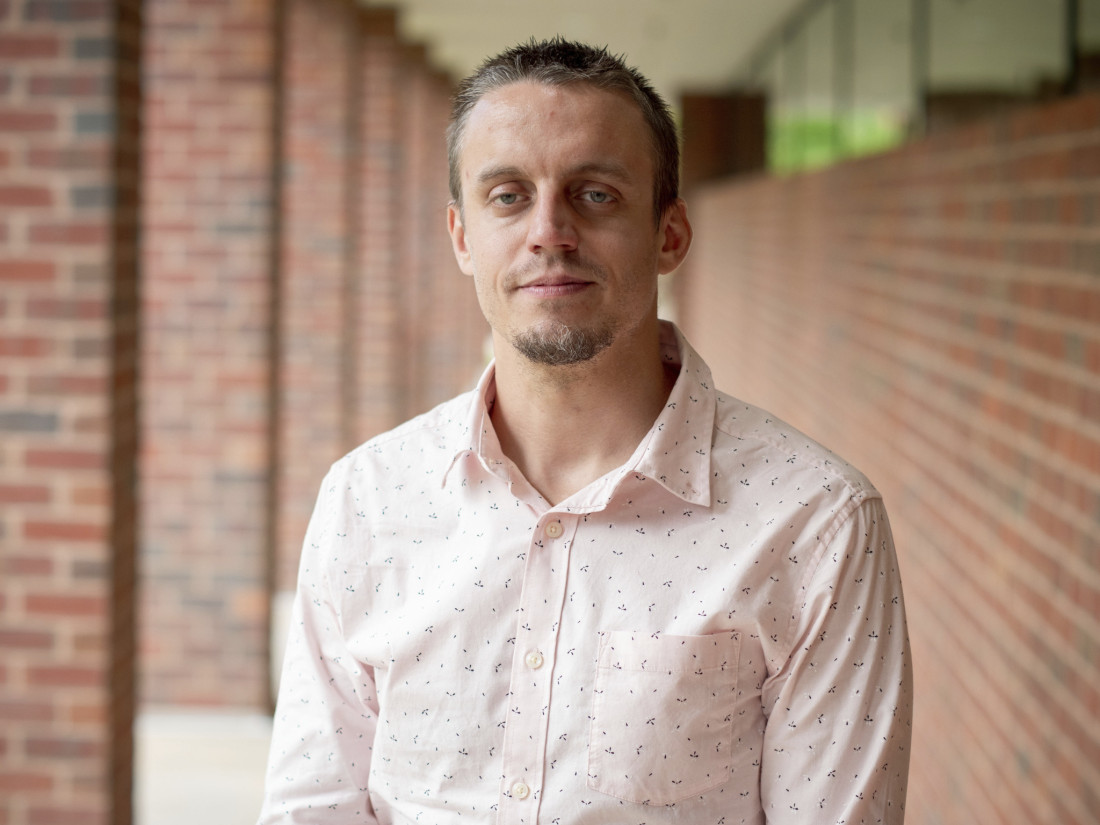Q&A: Javier Rasero Discusses New Research on Better Understanding Brain Alterations in People with Autism

The development of therapies for autism spectrum disorder has been hampered by a lack of consensus around anatomic alterations in the brains of autistic people. A new article, co-authored by Javier Rasero, who recently joined the faculty of the University of Virginia’s School of Data Science, aims to shed light in this area. Rasero recently discussed his research, what led him to UVA, and more.
Q. What brought you to UVA’s School of Data Science?
A. I’m a physicist by training. And what motivated shifting my research career after my Ph.D. was data science – the ability to closely work with data, which is something that I really love. So, the opportunity to work in a place like the School of Data Science that is dedicated to this precisely is kind of a dream for me.
I then also discovered that the School is rather new – a new building is going to open soon, new programs have been approved, so that means there is a lot of room for me to contribute. Then, during my interview, I met a lot of people from the School, and I saw such a young, healthy, and positive environment, committed to supporting you in many ways. Everything really aligned perfectly for me here.
Q. Your research focuses on the brain, and you recently had an article published on autism spectrum disorder. Can you explain the background of this study and the challenges you encountered, specifically the widespread differences, or heterogeneity, in autistic people?
A. This article is the result of several years of investigation. It was first assigned as a prediction problem of autism to a master’s student in my former lab in Spain. However, we soon realized that achieving a successful prediction was going to be really challenging due to the heterogeneity of this disorder.
So, we decided that, before taking any further steps, before performing any predictions, we needed to first understand this heterogeneity. I had quite a bit of experience in this area. In fact, I had published a couple of papers where my collaborators and I proposed a new method based on consensus clustering to brain connectivity matrices. In the current study that we are talking about, we are using a large, multi-institutional dataset comprising more than 600 autistic subjects. We applied consensus clustering to identify natural subgroups of autism and linked them with transcriptomics data.
Q. What are the key findings, and what kind of feedback have you received?
A. The first significant finding was the identification of two major stable subtypes. Interestingly, they did not differ statistically in behavior or brain volumetric information. However, they did differ in average functional connectivity, with one subtype characterized by hypoconnectivity, meaning a lower average connectivity compared to the average functional connectivity of healthy individuals. And the other subtype was characterized by the opposite, hyperconnectivity – that is, a greater average connectivity than the healthy group.
After correlating spatial alterations in functional network with transcriptomic data, we found that the hyperconnected subtype had significant genes consistent with excitation/inhibition imbalance during brain development, the most accepted hypothesis in the pathophysiology of autism.
Notably, we didn’t find this in the other subtype, nor using the entire autistic group. We recently got a commentary on our article from Dr. Michael Hawrylycz from the Allen Institute and Thomas Nickl-Jockschat from the University of Iowa where they acknowledge the importance of our study. They highlighted our translational approach, noting that we bridge the gap between systems neuroscience and molecular psychiatry, providing new opportunities for further reforms.
Q. What are some other research areas you’re excited about pursuing in the next year or two?
A. I’m kind of obsessed with trying to make the most out of our data, so this will be a primary focus of my research in the coming years, particularly in trying to better understand brain disorders such as autism, or Parkinson’s.
And to achieve this, I firmly believe that it is crucial to continue developing more integrative approaches for studying the brain. For example, this could involve integrating brain data with things like genetics or incorporating new features from dynamical aspects of the brain.
It may also entail looking beyond pairwise interactions or exploring links between the brain and other parts of the body. And the best part of this is that I am at the right spot to pursue this research because here at the School of Data Science and UVA there are faculty members that I am confident I can collaborate with.
Q. You went to school and did postdoctoral research in various locations in Spain and Italy. If you had to name a favorite spot in either of those two countries, what would it be?
A. One of my postdocs was in my hometown in Spain, Bilbao. It is a city that I wholeheartedly recommend everyone to visit because honestly it is the best city in the world. But I admit, I might be a bit biased. So let me tell you about a different place, Giovinazzo, near Bari, Italy. For me, this small town was magical. The blessing of being in Italy also means being able to enjoy some of the best food and coffee in the world.
Check out the references below to Rasero's research and the commentary discussing it:
Rasero, J., Jimenez-Marin, A., Diez, I., Toro, R., Hasan, M. T., & Cortes, J. M. (2023). The Neurogenetics of Functional Connectivity Alterations in Autism: Insights From Subtyping in 657 Individuals. Biological psychiatry, 94(10), 804–813. https://doi.org/10.1016/j.biopsych.2023.04.014
Hawrylycz, M., & Nickl-Jockschat, T. (2023). Linking Neurogenetics and Functional Connectivity in Autism. Biological psychiatry, 94(10), 765–766. https://doi.org/10.1016/j.biopsych.2023.09.001
